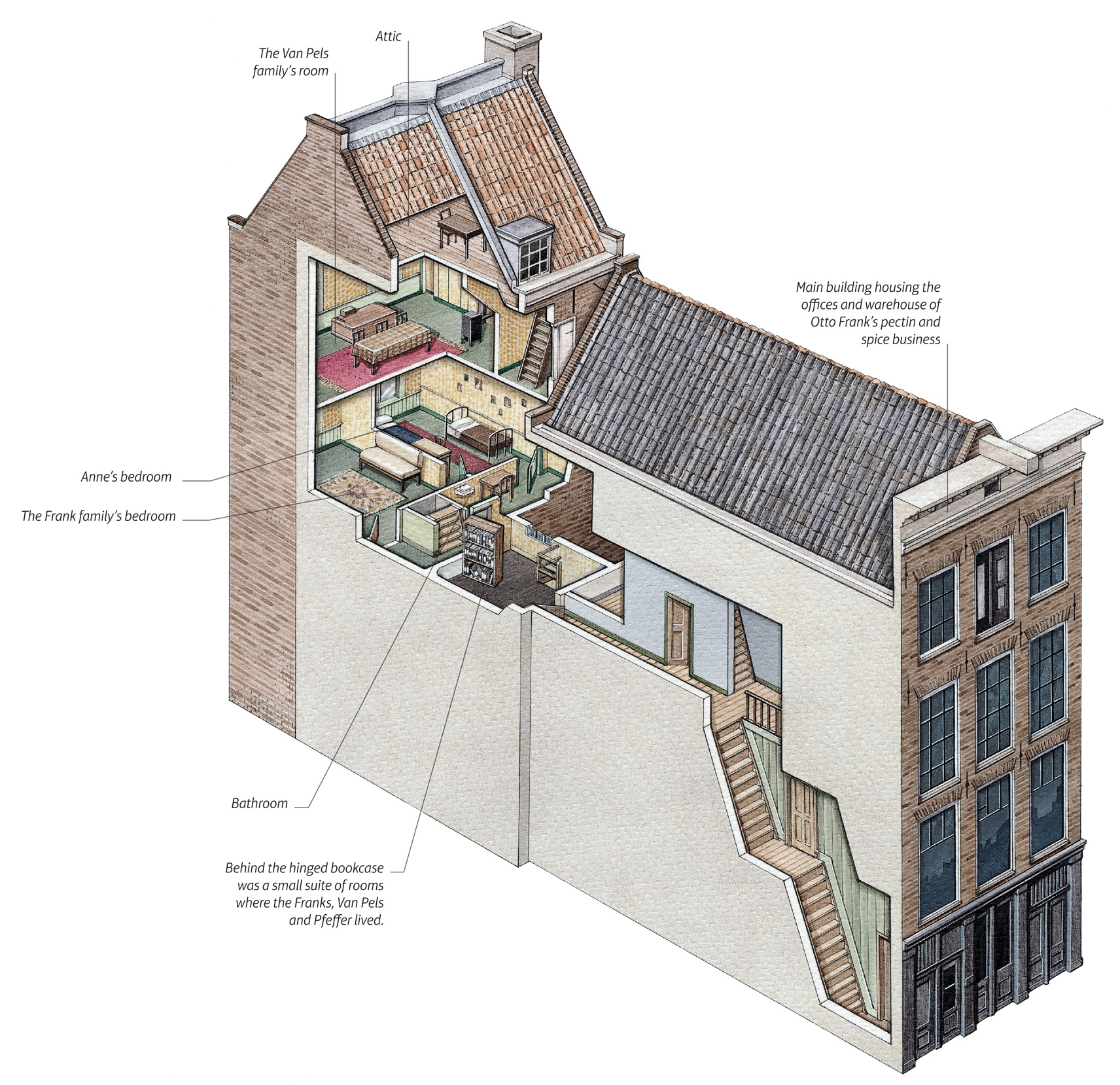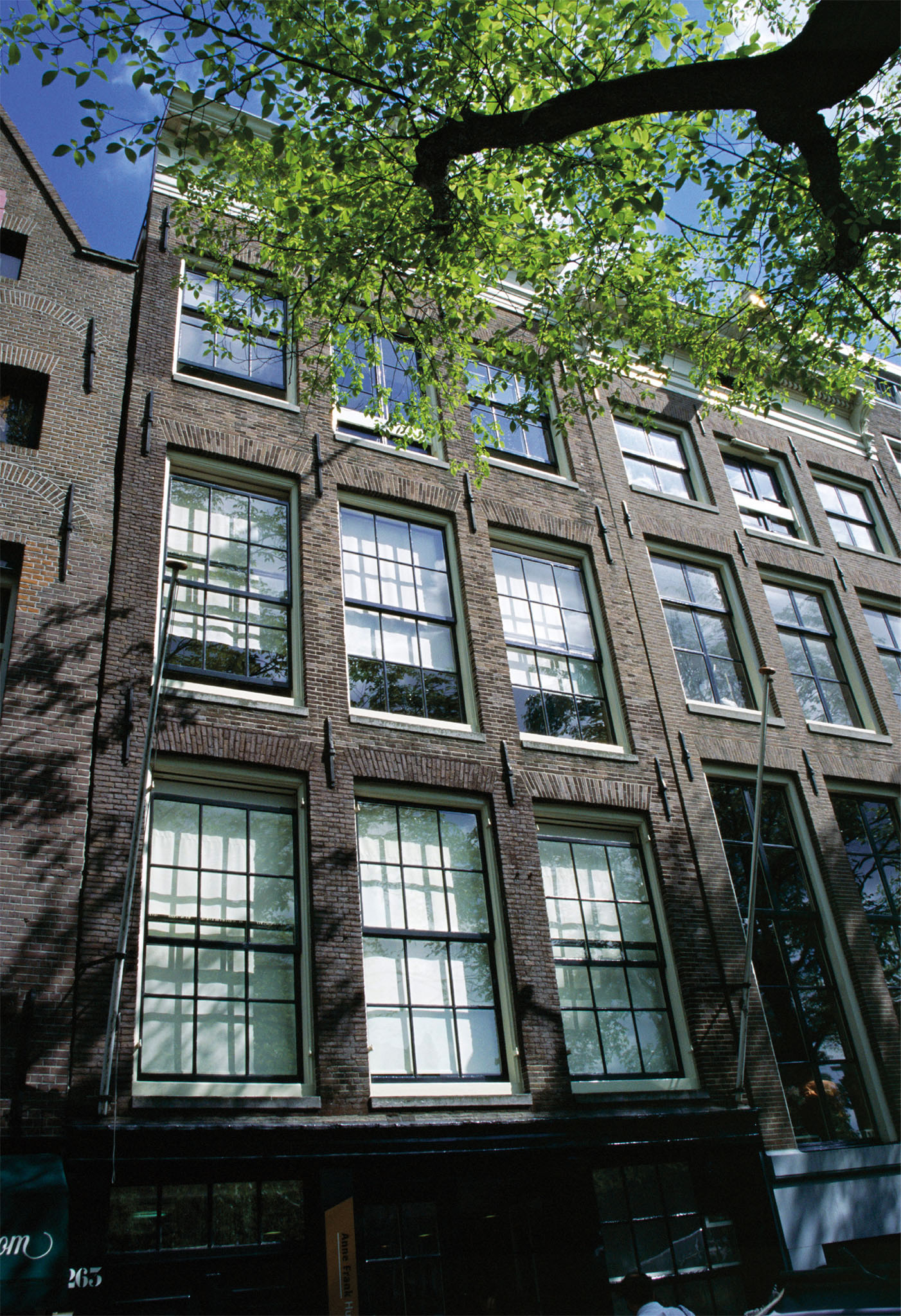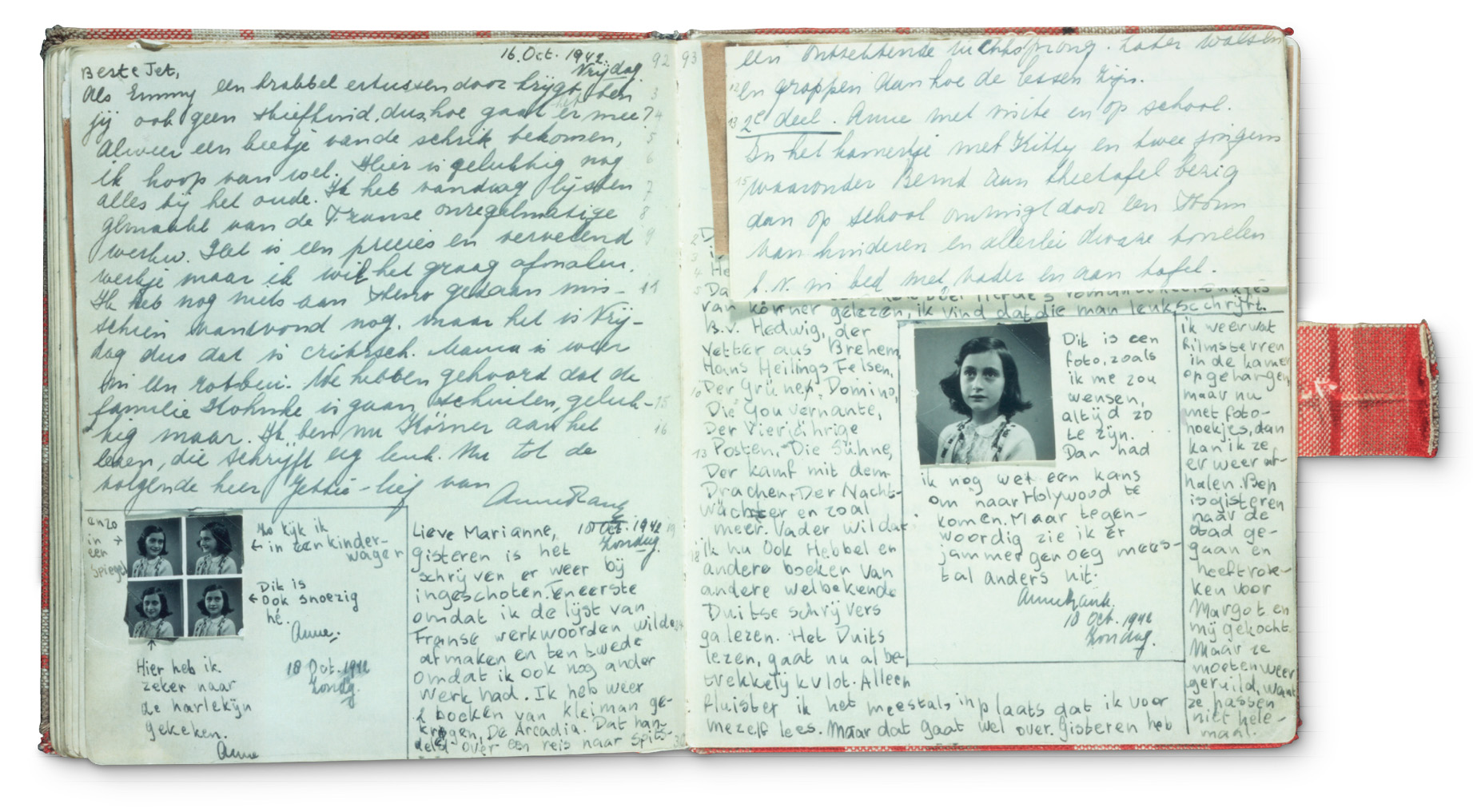
t Illustration showing the Anne Frank House’s secret annexe
D4 ⌂ Westermarkt 58 v 13, 17 # Apr–Oct: 9am–10pm daily; Nov–Mar: 9am–7pm daily (to 9pm Sat) ¢ Yom Kippur ∑ annefrank.org
Anne Frank’s diary is a moving portrait of a little girl growing up in times of oppression. Even those who have not read her diary will be moved by the annexe where she and her family hid.
Experience Central Canal Ring

t Illustration showing the Anne Frank House’s secret annexe
On 6 July 1942, to avoid their Nazi persecutors, the Jewish Frank family moved from Merwedeplein to the rear annexe of the warehouse at Prinsengracht 263. Anne, her mother Edith, her father Otto and her older sister Margot lived here, along with the Van Pels family and dentist Fritz Pfeffer. It was here that Anne wrote her famous diary. On 4 August 1944, the annexe was raided by the Gestapo. All those hiding were arrested and taken to different Nazi concentration camps.
The building beside Anne Frank House holds exhibitions exploring all forms of persecution and discrimination, as well as explaining Anne’s story. It is the almost empty annexe, however, which conveys the realities of persecution.
Reserve a date and time slot online, or book a guided tour, to avoid long queues.

t The plain façade offers no clues to the secret annexe found inside
Experience Central Canal Ring

Otto Frank returned to Amsterdam in 1945 to discover that his entire family had perished: his wife, Edith, in Auschwitz and his daughters, Anne and Margot, in Bergen-Belsen. Miep Gies, one of the family’s helpers while they were in hiding, had kept Anne’s diary. First published in 1947, it has since been translated into 70 languages, with some 35 million copies sold. For many, Anne symbolizes the six million Jews murdered by the Nazis in World War II.